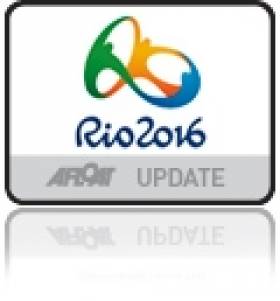Displaying items by tag: Mallorca
Ukrainian Sailor Tries to Sink His Russian Boss’ Luxury Yacht
Spain’s Marca is reporting that a Ukrainian sailor was arrested over the weekend for attempting to sink the superyacht owned by his Russian employer.
The €7 million Lady Anastasia — which was partially sunk at Port Adriano in Mallorca — is the property of Alexander Mijeev, the head of a Russian state-owned military weapons company.
It’s emerged that a Ukrainian national arrested at the scene has worked on the luxury yacht for a decade.
And he claims he was spurred into action by news reports of a Russian missile strike on a block of flats in Kyiv amid the ongoing crisis in the country.
He reportedly told offers of the Civil Guard upon his arrest: “The owner of this boat is a criminal who makes a living selling weapons and now they kill Ukrainians."
Marca has more on the story HERE.
No Sponsor But Record Number Set to Attend Trofeo Princesa Sofia – ISAF Sailing World Cup, Mallorca
#olympicsailing – Annalise Murphy will be the sole Irish Laser Radial campaigner in a 103–boat fleet in Mallorca in two weeks time at the latest round of the ISAF World Cup.
Murphy will be joined in Spain by London 2012 team–mates Ryan Seaton and Matt McGovern sailing the Irish 49er, 'The tighter the better'. Also in Mallorca, is single–hander James Espey in the Laser class.
In spite of the financial problems caused by the loss of the main sponsor only a few weeks ago the 45 Trofeo Princesa Sofia regatta is about to become a record edition.
Only two weeks to go to the start of the Majorcan regatta, to be held in the bay of Palma from 29th March to 5th April, a large number of entries have been received to confirm the Princesa Sofia as a must do event in the calendar of sailors from all around the world.
A large number of International teams are already training in the bay of Palma with view to the Trofeo Princesa Sofia.
With entries still open in some classes and increasing day after day, the 45th edition of the Trofeo Princesa Sofia, next to last stage of the ISAF Sailing World Cup, has 623 boats entered which add to a total of 882 sailors from 55 nations.
High participation in classes Laser, Finn and Nacra 17. With 70 boats entered, the Nacra 17 fleet, the new mixed multihull class, is a big surprise.
Furthermore, all Olympic classes will be present this year in the bay of Palma as it happened last year following some editions in which some class was missing due to a clash in the calendar with its Class event. The 2.4mR Paralympic class will also come again to Mallorca with a new venue at Real Club Náutico de Palma.
"We are very satisfied with the number and quality of entries received this year at the Trofeo Princesa Sofia –explains Ferran Muniesa, Race Manager -. We have gone through very tough weeks following the loss of our main sponsor, to whom we are grateful for their six-year sponsorship. The number of participants gives us the energy to continue working to deliver one of the best editions ever and confirms we are the favourite event for all sailors".
"I would like to thank all the team and the Organizing Clubs, Arenal, Can Pastilla and Palma, for the enormous effort they are undertaking despite the forced budget restrictions, to make sure the Princesa Sofia continues to be one of the best events in the world", adds Muniesa.
As in previous years, a large number of International teams are already training in the bay of Palma with view to the Trofeo Princesa Sofia. German, Polish, British and Danish teams, among others, have chosen Mallorca as winter training venue before the start of the European sailing season. Within this training programme, the Arenal Training Camps Trophy was held from 13th to 16th March.
In fact, the Sofia is the starting gun of the European calendar. It is also the next to last stage of the ISAF Sailing World Cup, following the event in Asia (Qingdao, China), Oceania (Melbourne, Australia) and America (Miami, United States). The next and last stop will be the ISAF Sailing World Cup Hyères, in France at the end of April. From that moment, all teams will focus on the ISAF Sailing World Championships to be held in Santander in September, an event to decide half of the nation slots for the Rio 2016 Olympics.





























































